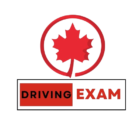1.
36. To get your vehicle out of a skid, you should first:
2.
17. What are the things that should be followed when driving in whiteout conditions?
3.
9. What should you do when you lose control of the vehicle during rain?
4.
4. What happens when you overdrive your headlights?
5.
19. A vehicle may skid when
6.
32. Why is it dangerous to drive at night?
7.
6. What should you do if you get caught driving in a dense fog?
9.
34. When should you turn on the headlights?
10.
21. What should you do when approaching an oncoming vehicle with its high-beam headlight glaring at you?
11.
14. How can you cope with a daytime glare?
12.
20. Hydroplaning occurs during heavy rain when the vehicle's tires ride up above the water on the roadway. To help prevent hydroplaning you should
13.
15. What is the purpose of an anti-lock braking system (ABS)?
14.
27. A flashing blue light mounted on a motor vehicle indicates
15.
26. When should the low-beam headlights be used?
16.
1. If you are a teenage driver with your G2 licence for six months and until you obtain your full G licence or turn 20, How many passengers are you allowed to carry between midnight and 5 a.m.?
17.
37. You should avoid driving in fog, but if that is not possible or you get caught driving in fog, then what should you do?
19.
12. What sort of steering adjustments should you make when your car is skidding?
20.
3.Back ice is dangerous because
21.
2. How can you control a skidding vehicle?
22.
13. Which of the following should you avoid during times of snow and other inclement weather?
23.
33. When should you use threshold braking?
24.
25. Why should you switch to low beams when you come to a curve or hilltop?
25.
7. What should you avoid when driving in foggy weather?
26.
40. What should you do if a safe place to park is not available on the road and there is a lot of fog and smoke outside?
27.
16. What precautions should you take when driving through the fog?
28.
11. What can happen if you apply cruise control when the weather and road conditions are poor?
29.
42. Why should you avoid driving in puddles?
30.
31. Roadways are most slippery
31.
29. How can you test your brakes if they are working properly after driving through a flooded road?
32.
39. Why should you use low beams when there is smoke or fog outside?
33.
24. Snow-removal vehicles on public roadways are equipped with a flashing
34.
30. What should you do when you are driving on slippery patches?
35.
38. What is the one most important thing to do when you start to skid?
36.
8. How should you pass through rutted snowy roads?
37.
23. What are the dangers posed by rain?
38.
10. If you are a teenager driver aged 19 or under and in the first six months of receiving your G2 licence. How many passengers are you allowed to carry between midnight and 5 a.m.?
39.
35. Why shouldn’t you drive in foggy weather?
40.
5. How can you avoid the dangers posed by rain?
41.
18. It is more dangerous to drive at the maximum speed limit at night than during daytime as:
42.
28. What is the best way to stop quickly on a wet or icy roadway is to

